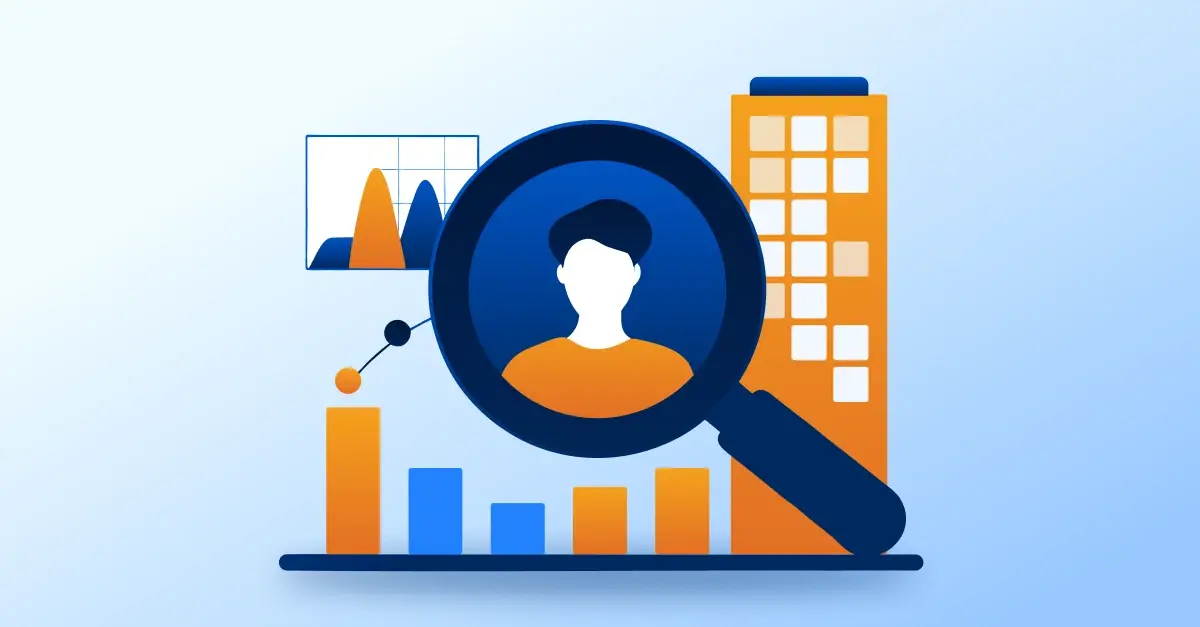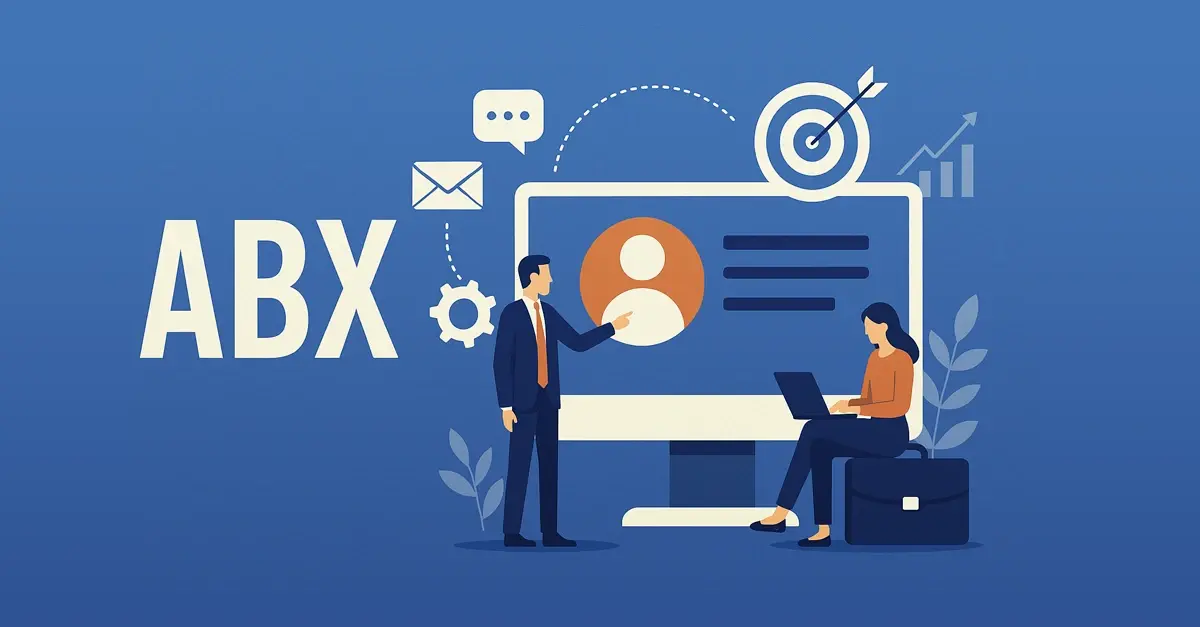Strategize for Thriving in a Cookieless Tracking Terrain
In January 2020, Google announced its commitment to user privacy and data protection by setting a plan in motion to phase out support for third-party cookies in its Chrome browser, and on January 4, 2024, Google restricted third-party cookies for 1% of users and also plans to tighten up third-party cookie restrictions to 100% of users from Q3 2024.
This decision sent panic waves through the B2B marketing industry, which is still trying to heal from the below-the-belt blow of Apple's (ITP). Introduced in 2017, Apple’s ITP significantly limited advertisers' ability to track users across the web using third-party cookies. Google's announcement marked another major step in reshaping the online privacy landscape and ushering in the era of cookieless tracking.
This move is a wake-up call to B2B marketers to start developing strategies and new ways to tackle the new challenge of targeting and tracking online users.
What is a cookie?
I know cookies taste yummy, but sad to say, we are not talking about the ones you bake at home, but rather those small files that are placed on your computer by those websites that you visit whenever you are on the internet.
These are used to store information about individual visits, such as where visitors spend the most time on the website and other vital settings.
Essentially, cookies work by helping the website to basically remember every little detail about visitor activities on a website.
By noting the site activities of visitors, cookies help to make the user experience a whole lot more personalized and exciting.
By being able to track individual activity online, such as; the websites that are visited as well as the ads that are clicked on by visitors on the site, cookies prove to be crucial to the strategic planning of website owners. It is the information gathered by cookies that advertisers use in showing site owners targeted ads.
![]()
Why is everyone going cookieless?
However, while in the past, third-party cookies were the backbone of B2B marketing, providing useful data for tracking individual user behavior, serving personalized ads, and retargeting potential customers, the tide seems to have changed overtime.
This change is mainly borne out of the high level of concerns about user privacy and data security making the usefulness and continued existence of third-party cookies feel like a house of cards.
To address concerns about user privacy and data security, major browsers such as Google, Apple’s Safari, and Mozilla Firefox have developed solutions that aim to block third-party cookies and in effect negate their previous seeming importance to website owners and even visitors.
In 2017, Apple introduced ITP in Safari, which limits the ability of advertisers and websites to track users across the web using third-party cookies.
As of January 4, 2024, Google has restricted third-party cookies to about 1% of users and they are aiming to tighten up third-party cookie restrictions to 100% of users by Q3 2024.
These vast changes, coupled with the implementation of data privacy regulations like CCPA and GDPR, are forcing B2B marketers to rethink their approach to online tracking and targeting and find a way to survive in a cookieless tracking world.
What is cookieless tracking?
Cookieless tracking refers to the way in which user behavior and interactions are tracked across the internet without relying on traditional third-party cookies.
Cookieless tracking is widely considered to be a safer and more privacy-friendly solution in comparison to traditional third-party cookies.
This is mostly because cookieless tracking uses tracking solutions that don’t store any information on individual user devices. Instead, the cookieless tracker will send information directly to platforms like Google Analytics or similar tools.
What is the hope of a B2B marketer in a cookieless tracking world?
As cookieless tracking takes center stage, the reign of third-party cookies is inevitably coming to an end. And as the B2B marketing ecosystem continues to take on new shapes, marketers need to step up and look for new ways and strategies to deliver tailored and customized user experiences without compromising the user's privacy and safety.
To deliver precise targeting and gather user behavior data, marketers must do more by becoming familiar with some of the cookieless tracking solutions out there, such as;
- server-side tracking,
- fingerprinting,
- first-party data collection, and
- Google Analytic 4 (GA4).
These cookieless tracking solutions serve as an alternative to traditional third-party cookies and they are useful tools that all B2B marketers can take full advantage of.
These cookieless tracking solutions offer a protected substitute for third-party cookies while still giving B2B marketers the opportunity to remain acquiescent to privacy regulations and policies.
What are the benefits of cookie-less tracking?
The introduction of cookieless tracking is bringing a breath of fresh air to the B2B marketing ecosystem, offering lots of benefits to B2B marketers.
This change offers better opportunities that go beyond third-party cookies. Because it places a premium on user privacy and fosters a new approach to tracking marketing strategies.
Key advantages of cookieless tracking solutions include:
Privacy Compliance:
Cookieless tracking solutions help to meet user preferences while adhering to strict data regulations, such as; GDPR and CCPA.
Increased Data Accuracy:
By utilizing server-side data collection, the challenges of cookie blocking are greatly reduced, resulting in more reliable insights.
Enhanced Personalization:
Cookieless tracking solutions use first-party data and contextual targeting to provide more personalized user experiences.
Future-Ready:
Cookieless tracking solutions are built for a constantly changing digital environment marked by tighter cookie restrictions and increased privacy concerns.
With these strengths, B2B marketers can easily navigate the post-cookie landscape, ensuring regulatory compliance, providing tailored user experiences, and achieving meaningful results.
Finding the right cookieless and retargeting tracking solutions that B2B marketers can leverage?
Cookieless retargeting and tracking solutions are gaining continued momentum due to privacy concerns and increased restrictions on third-party cookies, setting a standard for how marketers can target online users.
Some approaches include:
- Contextual Targeting:
Focus on the content users are interacting with rather than user data. Advertisements are displayed based on the content a user is currently viewing rather than their browsing history.
- Device Fingerprinting:
Analyzing unique device features (like browser settings and screen resolution) to create a fingerprint for identification.
Note: This method doesn't rely on cookies but raises privacy considerations.
- Probabilistic modeling:
This involves identifying users using statistical algorithms rather than individual identifiers.
- IP Address Tracking:
This involves monitoring IP addresses in order to identify and track users. This method has limitations, particularly in situations where several users share the same IP address.
- First-party Data:
This uses first-party data obtained directly from users with their consent. This includes information gathered through user registrations, subscriptions, and interactions.
- AI-driven Predictive Targeting:
It uses machine learning algorithms to predict user behavior based on available data, allowing for targeted advertising without the need for cookies.
How does cookieless tracking work?
Server-side tracking is one of the most credible and privacy-friendly ways to track user behavior without using cookies. Server-side tracking executes the tracking code on the server rather than in the user's browser.
This eliminates the need for the user's device to store tracking data and instead relies solely on the server.
There are several ways to implement server-side tracking, such as:
Server log analysis:
Analyzing server logs entails looking at the data contained in each request to a website, such as the user's IP address and user agent. This analysis is used to track user behavior and generate website traffic reports.
Event tracking:
On the server side, you can track events, such as; page views, clicks, and form submissions. The collected data can be saved in a database or sent to a third-party analytics service.
To make good use of server-side tracking without cookies, each vendor's tracking must be set up solely on the server side. This strategy provides more precise control over the data that each vendor collects and records.
Take, for example, platforms like Google Analytics 4, Facebook, and TikTok, along with other analytics and marketing tools. They typically require a blend of web and server-side tracking.
In such arrangements, web pixels can collect data and establish cookies, while server-side tracking provides support for web tracking in overcoming various tracking constraints.
Adopting a fully server-side tracking model results in a unified data flow in which user and event information is sent to a server-side container, such as; webhooks from your CMS or CRM.
Following that, in the server-based environment of a tool, such as; Google Tag Manager, you can choose which data to send to your analytics and marketing platforms.
Types of cookieless tracking tools:
There are lots of cookieless tools developed to aid tracking and retargeting while respecting user privacy:
- Contextual Advertising Platforms
These platforms analyze the content of a webpage to serve relevant ads without requiring user information. They concentrate on keywords, topics, or the overall theme of the webpage.
- Universal ID solutions
A pretty good example of this is Unified ID 2.0, which uses hashed and encrypted email addresses or other identifiers given by users to track behavior across websites in a privacy-compliant manner.
- Server-side tracking
This approach transfers data collection from the client (browser) to the server.
It reduces reliance on cookies and aids in compliance with privacy laws.
- Data Management Platforms (DMP)
Advanced DMPs are evolving to use first-party data and contextual signals to segment and target audiences without cookies.
- Customer Data Platforms (CDPs)
CDPs integrate data from multiple sources to create a detailed view of the user, relying on first-party data collected with consent.
- Privacy-First Analytics Tools
Tools such as Google's Privacy Sandbox and Apple's SKAdNetwork offer aggregated, anonymized data insights while protecting user privacy.
- AI and Machine Learning Algorithms
These are used to perform predictive analytics and pattern recognition on user data, allowing for personalized experiences without direct tracking.
When considering these tools, it's important to balance efficacy with ethical considerations and compliance with evolving privacy laws like GDPR, CCPA, and others.
Google Analytics 4 (GA4): A deal breaker for cookieless tracking
GA4 is a free analytics platform that offers in-depth insights into user engagement on websites and apps. Unlike its predecessor, Universal Analytics, GA4 extensively uses automation to improve users' data comprehension.
It uses two types of analytics insights: automated insights, which alert users to data changes or trends, and custom insights, which allow users to create conditions that detect data changes.
In short, GA4 was developed to help users grow their businesses, achieve goals, and use automation to provide robust, unparalleled data.
What sets GA4 apart from Universal Analytics?
The main difference between GA4 (Google Analytics 4) and UA (Universal Analytics) data collection methods is how conversions are counted.
GA4 is designed to track multiple conversions for the same event during a single session. This means that if a user performs the same action (such as making a purchase) multiple times in a single session, each action is treated as a separate conversion.
On the other hand, UA operates in a different way. It can only count one conversion per session for the same event.
So, if a user makes multiple purchases in one session, UA will count it as just one conversion.
This fundamental difference in data collection between GA4 and UA significantly impacts how user interactions are understood and reported.
Final thought
Cookieless tracking is here to stay, and traditional methods used by B2B marketers to collect user data are no longer relevant.
B2B marketers who want to stay relevant should develop new strategies that prioritize privacy compliance.
FAQs About Cookieless Tracking
What does cookieless tracking mean?
Cookieless tracking refers to the way in which user behavior and interactions are tracked across the internet without relying on third-party cookies.
Can you track users without cookies?
Yes, you can. There are tools and software you use to perform data-based, personalized marketing without having to depend on cookies.
Is Cookieless tracking GDPR compliant?
Yes, it is.
How can I collect data without cookies?
You can collect data through several ways including email sign up and survey.





Comments